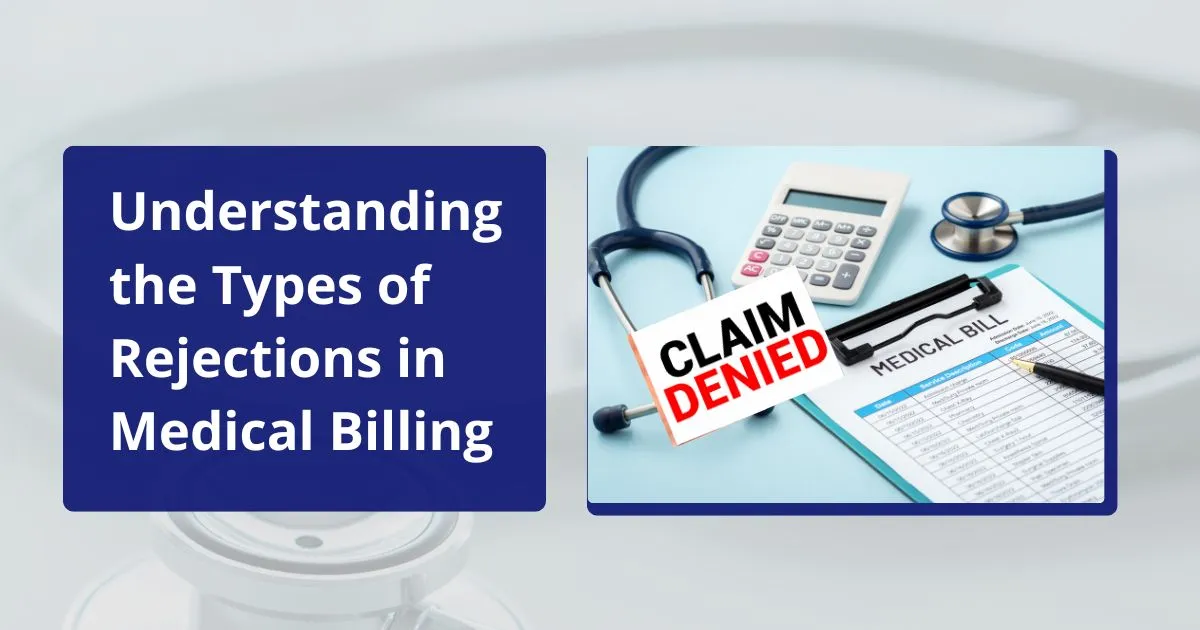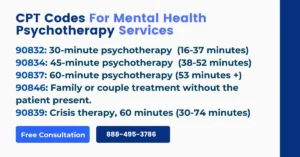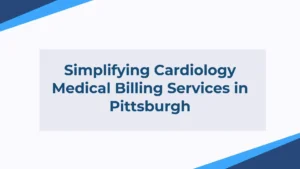Medical billing rejections are a common challenge for healthcare providers, medical billers, and insurance companies alike. They occur when claims fail to meet specific requirements established by insurance carriers, leading to delayed or lost revenue. Recognizing the level of rejections in Medical Billing and Types of rejections in Medical Billing is the key to maintaining a smooth revenue cycle while ensuring timely payments for services rendered.
Let’s dive in to discuss the various types of medical billing rejections, the differences between rejections and denials, and strategies to address them effectively.
By the end, you’ll have the knowledge needed to minimize rejections and streamline your billing processes.
Understanding the Types of Rejections in Medical Billing
Medical billing rejections can be broadly categorized into four types. Here’s a deep dive into each one, along with actionable tips to handle them effectively.
1. Hard Rejections
Definition and Examples
Hard rejections occur when a claim is entirely rejected by the payer and cannot be corrected or resubmitted. These rejections require submitting an entirely new claim for payment processing. Examples include submitting incorrect patient information or using outdated billing codes.
Common Reasons for Hard Rejections
- Invalid or expired insurance information
- Providing incomplete patient demographics
- Using incorrect or discontinued procedure/diagnosis codes
- Failing to submit the claim within the payer’s specified time limits
How to Prevent Hard Rejections
- Verify patient insurance and demographic details before submitting claims.
- Regularly update your medical billing software to ensure access to current codes.
- Train billing staff to double-check claims for accuracy and compliance with payer guidelines.
- Monitor submission deadlines closely to avoid timely filing rejections.
2. Soft Rejections
Definition and Examples
Soft rejections refer to claims that are rejected temporarily due to minor errors. These claims can be corrected and resubmitted for processing. For instance, incorrect modifiers in procedure codes can lead to soft rejections.
Common Reasons for Soft Rejections
- Missing documentation (e.g., prior authorization or medical necessity notes)
- Minor formatting errors in claims
- Lack of clarity regarding coordination of benefits between multiple insurers
Strategies to Address Soft Rejections
- Implement a robust cross-check process to catch small errors before submitting claims.
- Ensure all supporting documents are attached as per the payer’s requirements.
- Automate error detection in your billing system to flag issues early.
- Track soft rejections closely and resolve them promptly to prevent delays.
3. Front-End Rejections
What Are Front-End Rejections?
Front-end rejections happen before the claim even reaches the payer’s review stage. These tend to occur at the electronic clearinghouse level due to formatting or transmission errors.
Common Front-End Rejections
- Incorrect formatting of claim details
- Invalid provider identification numbers (e.g., NPI numbers)
- Duplicate claims submitted to the clearinghouse
Steps to Minimize Front-End Rejections
- Validate all claim data in your practice management system before submission.
- Ensure accurate entry of provider IDs and other essential details.
- Avoid sending duplicate claims by implementing proper tracking systems.
- Review clearinghouse rejection reports daily to address errors proactively.
4. Back-End Rejections
What Are Back-End Rejections?
Back-end rejections in Medical Billing occur after the claim has been submitted to the payer and reviewed. These rejections often stem from improper claim adjudication or interpretation of Types of rejections in Medical Billing and payer policies.
Common Back-End Rejections
- Failure to meet plan coverage criteria (e.g., service not covered under policy)
- Incorrect bundling of procedures or services
- Dispute over billed charges or allowances
Methods to Handle Back-End Rejections Effectively
- Familiarize yourself with each payer’s policy guidelines to avoid coverage issues.
- Use automated coding tools to ensure compliance with bundling rules.
- Engage with the payer directly to resolve disputes over charges.
- Prioritize payer-provider communication to clarify policy-related misunderstandings.
The Most Common Denials in Medical Billing
Denials are a related but distinct challenge in medical billing. Some most used denials in medical billing include coverage denials, authorization denials, coding-related denials, and types of rejections in Medical Billing.
Strategies to Reduce Denials
- Always confirm insurance eligibility and plan details before the patient’s visit.
- Obtain prior authorizations for services where necessary.
- Conduct regular audits to identify and correct common coding errors.
Difference Between Denials and Rejections
It’s important to understand the difference between denial and rejection in medical billing to address them effectively.
- Rejection: A claim is rejected due to errors in data entry or formatting, often occurring before payer review. Rejections are typically fixable by correcting the issues and resubmitting the claim.
- Denial: A claim denied by the payer after review, usually due to policy or coverage issues. Denials are more challenging to overturn and often require an appeal process.
Example: If a claim includes the wrong patient ID, it will be rejected until corrected and resubmitted. However, if a claim is denied due to lack of medical necessity, it requires an appeal with supporting documentation.
Why Understanding Rejections Matters
For medical providers and billing professionals, staying informed about the various levels of Types of rejections in Medical Billing is critical for maintaining efficient revenue cycles. Identifying the root cause of rejections helps reduce claim processing delays and saves time, effort, and costs.
Streamline Your Medical Billing with Expert Help
Managing rejected claims and denials can be overwhelming, but it doesn’t have to be. Providers Care Billing LLC, based in Illinois, USA, specializes in providing comprehensive medical billing and coding services. With our expertise, we can help streamline your revenue cycle, minimize errors, and maximize reimbursements.
If you’d like to transform your billing process, get in touch with Providers Care Billing LLC today!




